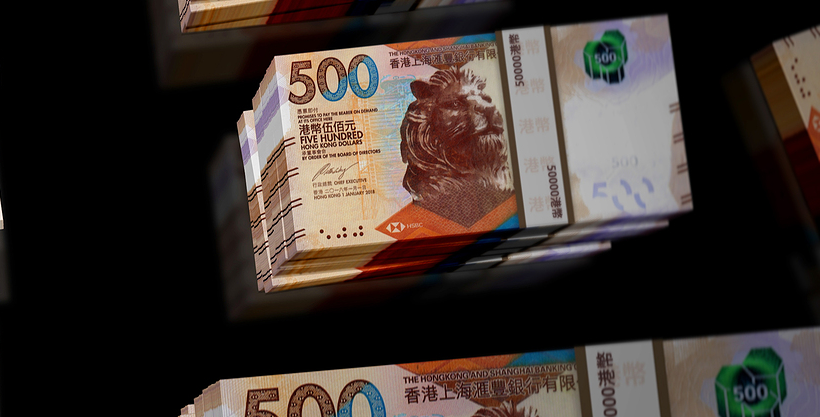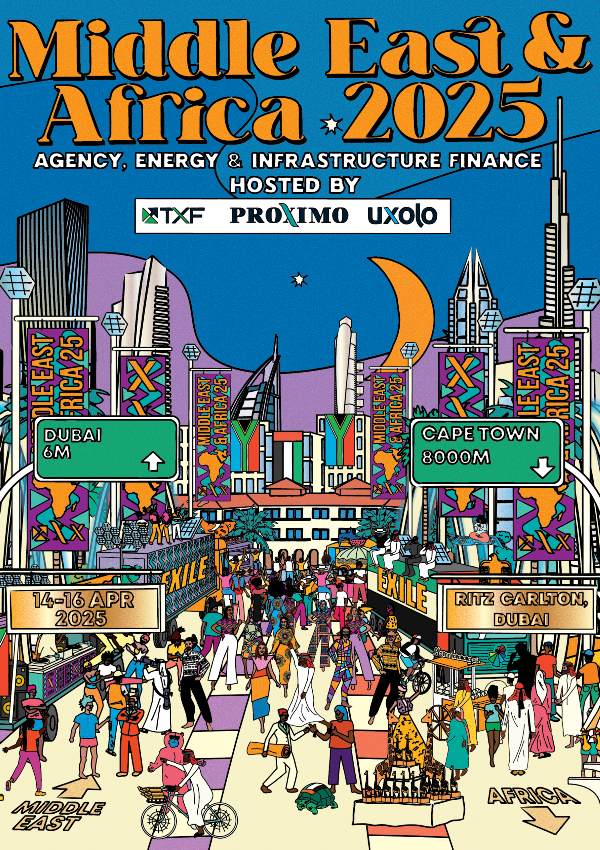Recycling SDRs - the alternatives on the block
Calls for the reform of IMF’s Special Drawing Rights (SDRs) are getting louder – the volume was pumped up to high at the last AfDB meeting. Uxolo talks to Hassatou Diop N’Sele, CFO of AfDB, and Mark Plant, COO of Center for Global Development, about the pros and cons of two popular reforms to the current system that have been tabled.

Ever since $650 billion of Special Drawing Rights (SDRs) were distributed by the IMF in 2021 – 70% of which went to high-income countries – the international community has been calling for reserve assets to be rechanneled to more effective ends and developing economies.
SDRs are interest-bearing international reserve assets that serve as a supplement to other reserve assets for IMF member countries. As opposed to a currency, SDRs are a claim on the freely usable currencies of other IMF members based on a basket of currencies including the US dollar, Japanese yen, European euro, UK sterling and Chinese renminbi.
The IMF, as the distributor of SDRs, sets their value each day based on the fixed amounts of the currencies in the SDR basket and the daily market exchange rates between the currencies. SDRs are currently allocated to countries based on their IMF quota, but this has caused significant uproar from developing countries, which argue this is allocation inverse to need.
For example, in August 2021, the IMF approved the largest ever allocation of SDR 456.5 billion when they were equivalent to approximately $650 billion. In line with the IMF quota, the United States received $113 billion, Japan $42 billion, China $42 billion, Germany $36 billion, and the UK $27.5 billion, and, overall, the G7 received $277 billion – whereas the entirety of the African continent received $33 billion. The scores equalled to an average of $600 million per African country and $39 billion per advanced economy.
Many institutions argue the distribution of SDRs is inefficient for development purposes and are calling for those currently in allocation to be recycled to more effective ends.
Of the IMF’s member nations, the G20 has pledged to reallocate $100 billion to more vulnerable countries, including a $10 billion commitment from China to Africa which accounts for 25% of its initial allocation. $13 billion has also been collectively pledged by France, Spain, Italy, the Netherlands, and Belgium; however, a $21 billion commitment from the United States is routinely failing to get past congress.
Institutions including AfDB and the IMF itself are thinking up mechanisms that can facilitate the transfer of SDRs to member countries more in need.
The IMF’s plan
The IMF has set up two instruments aimed at tackling the problem: the Poverty Reduction Growth Trust (PRGT) and the Resilience and Sustainability Trust (RST).
PRGT makes up the IMF’s main vehicle for concessional loans to low-income countries (LICs), currently lending with 0% interest rates. A long established fund, PRGT has been delivering financing to 39 eligible countries since 2009. Eligible countries include those that struggle with development prospects and are hindered by a lack of foreign exchange, such as in cases of debt distress.
However, a recent IMF report outlined that these finances were under strain owing to “substantially stronger demand” and “sharply higher interest rates than previously envisaged”. So far, PRGT has been able to provide SDR 17 billion ($24 billion) in grants but faces a shortfall of approximately SDR 4.7 billion ($6.3 billion) in pledges. Mark Plant, COO and senior policy fellow at Center for Global Development (CGD), explains that while the fund lends at a 0% interest rate, it pays its lender countries approximately 380 basis points (bp) for their SDRs. A subsidy account, filled with additional donor SDRs, is used to fill the gap – but that account is running out of money.
While the PRGT has been effective at delivering funding to these countries and has been widely used, it remains limited. It cannot lend to any but the lowest income countries, and it can fulfil only a restricted set of purposes. It doesn’t address how the rest of the emerging markets are going to sustainably develop and mitigate against and adapt to climate change.
In response to this need, the IMF set up the RST in April 2022 with the aim of funding climate change mitigation and adaptation and pandemic preparation. More is happening on the RST front, which has received SDR 30.4 billion ($40.4 billion) in pledges, of which SDR 19.5 billion ($26 billion) has been finalised with contribution agreements. Of the bipolar hegemonic powers, the US indicated its intention to contribute but, once again, is unlikely to be able to raise congressional support, while China stands tall pledging SDR 6 billion ($8 billion) as the most significant contributor.
The IMF has committed to and approved loans for Costa Rica (SDR 554 million), Barbados (SDR 142 million), Rwanda (SDR 240 million), Bangladesh (SDR 1 billion), and is still considering a SDR 574 million loan to Jamaica. There are certain benchmarks countries need to meet before disbursements can be made – Costa Rica was first in line for its initial disbursement, which was due in March 2023, but was delayed in meeting its requisite benchmarks; meanwhile, Rwanda reached first place and received their first disbursement of $98.6 million in May.
Is the RST perfect?
The RST has received criticism over its use of typical IMF conditionality and its effectiveness in promulgating positive climate action.
Firstly, RST loans, like all IMF lending, are dependent on countries agreeing to reform measures and also, at creditors’ insistence, can only be made when the borrowing country has a regular IMF programme or credit line in place. This will affect the length of disbursements – while RST loans have 20-year tenors, RST programmes and their disbursements can only take place during the life of a concurrent UCT programme, which typically only last three years.
CGD has warned against applying improper conditionality to RST loans, arguing “business-as-usual conditionality is not fit for the ambitious purpose of helping countries build resilience to external shocks and ensuring sustainable growth”.
The tensions long-since evident in applying IMF conditionality to meet structural problems are magnified in the RST’s design. Plant explains that while the trust is meant to help countries transition to a greener, more sustainable and equitable economy, it needed to offer support that has measurable milestones. It did so fast; going to countries that already had programmes in the last stages of development, like Costa Rica and Rwanda. However, some have criticised the programmes funded by the RST for being surface-level efforts – measures like green tagging budgets are not going to reduce emissions overnight. Plant counters that while “these may not be the deepest measures, we have to do them in order for this ever to work … it’s not cheap to redo your budgetary process, and it engages the Ministry of Finance with the climate conversation”.
When asked how the RST could be improved, Plant clarifies that “the IMF is not made up of climate experts, but economists. They have to rely on the World Bank and others for that expertise, and that’s a process that will be built over time”. Agreeing that stronger programmes and measures should be pushed for, he points to CGD’s work on methane emissions – controlling these emissions would have both a local and global impact, reducing global warming and improving health around methane-emitting factories. “If the IMF decided it was going to push methane as a big deal, that would be something substantive, that would be a deep condition”.
Thinking beyond the IMF
There are two alternatives to the IMF’s solution that have grown in popularity, although so far neither have managed to get off the ground. The first comes from AfDB, which is advocating for SDR rechanneling through MDBs in order to facilitate and multiply the impact of development.
AfDB has designed a hybrid capital structure which would allow G20 nations to lend their SDRs to multilaterals which they can account for as 100% equity (as rated by S&P and Fitch), leveraging them in public capital markets at affordable rates owing to their triple-A ratings. The hope is that this mechanism would increase MDB callable capital without having to ask shareholder nations to open up the coffers.
AfDB stepped in to design the new financial instrument, creating a solution that would fit the problem appropriately. For example, one of the proposal’s fundamental advantages is that it defends the SDR’s reserve asset status – i.e., the ability of lender nations to withdraw their SDRs, as they would with any other reserve asset, when they wish. In a hybrid capital structure, the SDRs would not be exchanged or swapped, just leveraged against – and leveraged to 4-6 times against the SDR’s worth at that, as MDBs are able to raise private investment alongside their lending. The proposal is designed to complement the PRGT and RST, by providing “direct investment into the real economy”, says Hassatou Diop N’Sele, CFO of AfDB.
Another advantage is that the bond will come at zero cost to taxpayers. When a country receives an SDR allocation, it is required to pay the SDR interest rate to the IMF; when its SDRs are deposited with the IMF, it receives the same interest rate in return, leaving it in a neutral position. However, if it decides to lend or exchange the SDRs for another currency, the country is liable for paying the IMF interest rate. The AfDB proposal requires borrowing MDBs to pay the interest rate for the cost of allocation – allowing countries to use their idle reserves for development impact at no cost.
N’Sele was bullish about the potential of the new financial tool, and the MDB is simultaneously planning a sustainability hybrid capital bond which is ready for a non-deal roadshow in the coming weeks, designed to raise financing from institutional investors, philanthropies and shareholders alike.
The other proposal is for SDR-denominated bonds, which MDBs will issue and developed countries can pay for with their SDRs. While this solution does not have a multiplier effect, Plant says that it “gets around some structures within various countries that mean SDRs cannot be used directly to invest in capital”. He explains that in the US, UK and Germany, SDRs are not controlled by the government treasury but by the central bank and issues around passing their use through congress and pricing the assets are hindering progress (US and UK, respectively). Although, in the end, there is little difference between the impact of this proposal and ordinary public capital market borrowing for an MDB – apart from reallocating SDRs is a lot more complicated for lenders to organise.
The Uxolo perspective
Both solutions have faced significant hesitation from the demand side. The AfDB’s hybrid needs at least five lenders, the “fabulous five” as N’Sele termed them, for the initiative to launch – the UK was ready to invest SDR 0.5 billion but, ahead of the New Global Financing Pact summit later this month, decided it couldn’t continue holding back the SDRs and sent them to the PRGT instead. The promise remains that if the AfDB proposal matures in the future, the UK will find additional SDRs for it.
Additional shareholders that have officially expressed interest in the proposal include Japan and Saudi Arabia. France had initially strongly supported the initiative, but was prevented by the European Central Bank’s (ECB) stance, which has advised that eurozone countries may only recycle their SDRs through the IMF to eurozone countries.
Lawyers are involved in determining to what extent this advice is embedded in regulation, but meanwhile AfDB has designed a liquidity support agreement to allow these shareholders to still participate. The proposal was formally presented to eurozone countries at the beginning of June 2023 and entails countries providing ordinary capital guarantees that would reimburse lost hybrid capital if an issuing country fell into a balance of payment issue – an unlikely scenario considering the IMF has already approved the list of countries eligible to provide hybrid capital.
Some creditors have also expressed concern around the concept of hybrids, worried that, like with any equity investment, if the enterprise goes down, you lose the SDRs. Plant was critical against the likelihood of this, stating: “If AfDB goes belly up, this will be way down on the list of things they encash – and if we got to that point, then the world is really going through a much bigger financial problem”.





